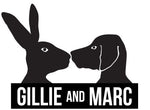When public art is hard to find
Published 30 Oct 2025

On a dazzlingly sunny morning earlier this month, I headed to the Charlestown Navy Yard in search of public art. Specifically, I was on the hunt for four Boston Public Art Triennial pieces, which were noted on the Triennial’s digital map. Instead, what greeted me when I stepped onto the sidewalk by Drydock 2 was a huge bronze statue of an octopus, its outstretched tentacles balancing a cute collection of fellow animals, including an elephant and a rabbit wearing a dress.
Make no mistake — this was public art, just not the art I had come to see. The piece is called “Bridge of Joy” by the British and Australian artists Gillie and Marc, whose whimsical sculptures of anthropomorphic wildlife can be found around the globe. The installation — which our own Solon Kelleher wrote about over the summer — consists of three large bronze statues scattered around the Navy Yard, designed to draw more visitors to the national historic park. Even on a quiet Monday morning, the tactic appeared to be working. People stopped to take photos with the octopus and wandered further down the pier to examine a bronze rabbit seated across a table from a hippo. I spoke to a couple who had traveled from Waltham to see the statues after spotting them on social media.
In fact, the installation was so successful I fear it overshadowed the nearby Triennial sculptures. A trio of pieces, all by Boston-area artists selected through the Triennial’s Artist Accelerator program, was visible from the site of the bronze octopus, but didn’t attract any passersby. There was a sign pointing visitors all the way down the pier to a fourth Triennial sculpture: “Nomad 2” by the Los Angeles artist Beatriz Cortez. WBUR photographer Robin Lubbock and I headed down the boardwalk in search of the sculpture, which appeared at long last from behind some parked cars. It was a strange metal contraption, with a texture like a turtle shell — alien, as if a piece of space junk had fallen from the sky.

As we drew closer, we could see that the sculpture was hollow. Inside, we found a mysterious control panel lit up with dials and switches. A small screen showed black-and-white footage of the ocean with snowy mountains in the background, while a speaker crackled with the faint cries of seagulls. A plaque outside explained that the installation was inspired by the artist’s trip to the Arctic Circle, where she came across a graveyard of whale skeletons. The piece, we learned, was meant to resemble a huge steel whale vertebra. We stepped back from the sculpture and examined it anew.
Both “Bridge of Joy” and “Nomad 2” deal with humanity’s relationship with the natural world, the former highlighting the plight of endangered species and the latter addressing the impacts of climate change. But in every other sense, the two are diametrically opposed. “Bridge of Joy” is whimsical, eye-catching, and relatively legible, even if it’s a bit strange to see an octopus holding an elephant in its tentacle. That, of course, is the appeal of the sculpture. It’s surprising yet familiar, and very inviting. “Nomad 2” is mysterious by design. It’s not the sort of thing tourists stop to take selfies in front of. But it rewards curiosity, producing a sense of discovery, even a kind of wonder, when examined more closely.
Personally, I found “Nomad 2” to be the more satisfying piece. But its placement far out on the end of the pier, along with its proximity to a much more attention-grabbing installation, may have undercut its impact. Placing it along a path that people naturally follow to get from one place to the next might have yielded better results. And perhaps passersby would have been more curious about it if they weren’t so busy posing in front of a giant octopus.
 I encountered more of these curious objects on my walk through the woods. They weren’t all hats. There were plywood contraptions, straw brooms, tangled rope hammocks and hollow clay spheres that made me think of giant olives tossed into the forest canopy. These items were strung up around tree trunks and dangled eerily from branches, enigmatic offerings left behind by some long-lost inhabitant of the forest.
I encountered more of these curious objects on my walk through the woods. They weren’t all hats. There were plywood contraptions, straw brooms, tangled rope hammocks and hollow clay spheres that made me think of giant olives tossed into the forest canopy. These items were strung up around tree trunks and dangled eerily from branches, enigmatic offerings left behind by some long-lost inhabitant of the forest.
Of course, the point of “Indistinct Form” is not to confound its human interlocutors but rather to interact with the creatures of the woods. I thought about this as I stomped loudly through the brush, making my human presence known. The only animals I saw were some wild turkeys, seemingly oblivious to the art all around them. But the nature center’s operations manager, Heather Deschenes, assured me that the center’s cameras had detected plenty of animal activity around the sculptures. The staff had been careful not to examine the installations too closely, lest they disturb any creatures that had taken up residence there.
We would have to content ourselves with the thought that, at some point, a bird probably sought sanctuary inside one of those dangling clay cocoons or that a chipmunk took a nap inside a hat. Considering this was like stepping back from a sculpture and examining it anew. There is so much life unfolding every second on every inch of the earth. Most of it, we can only imagine.



